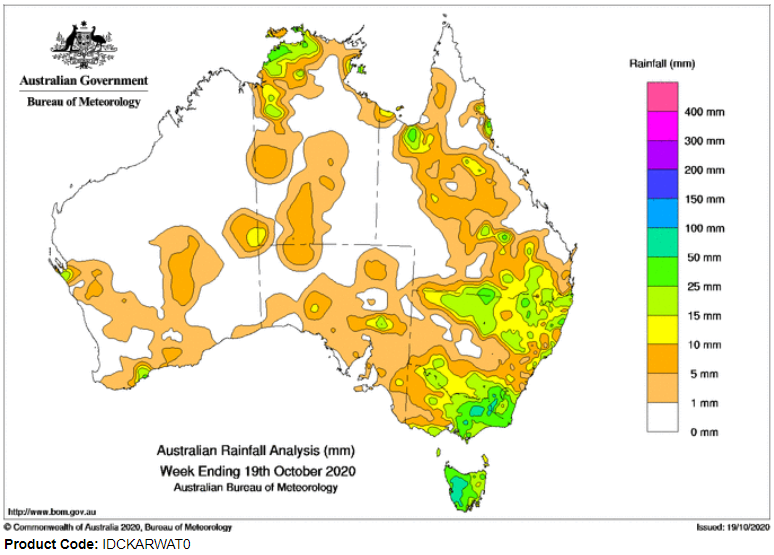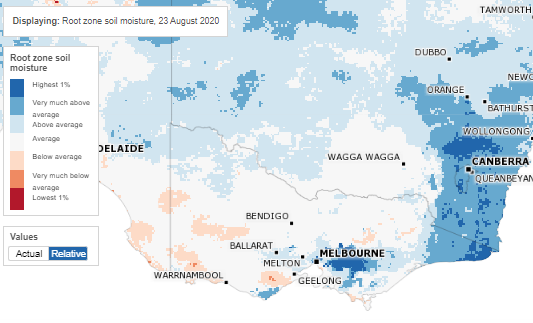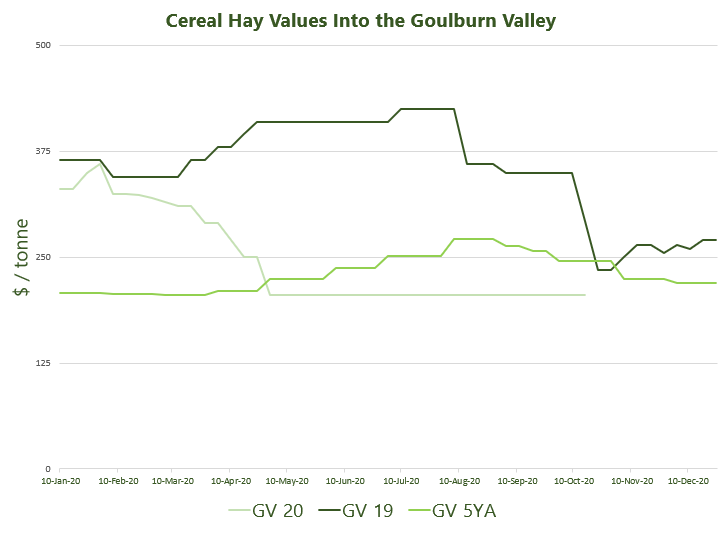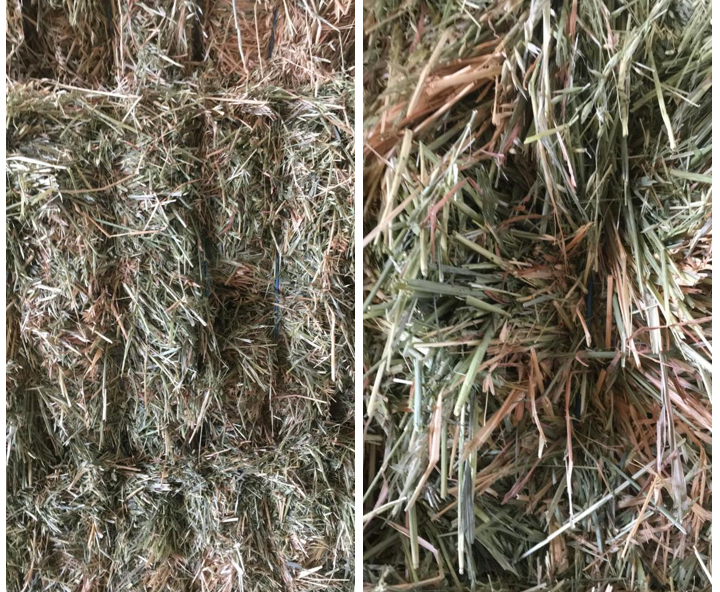Seasonal Update
Rain is making its mark on hay this season. Wet weather is likely to be a key driver of demand.
20-25mm of rain fell this week. This was ideal for crops, which are doing well in the Goulburn Murray Valley.
50mm of rain fell across southwest Victoria this week. Silage production is up on previous years.
The Brunswick area received 30mm of timely rain this week.
Across the Wheat Belt, conditions have become dry and growers made the decision to cut even though it was still early.
20mm of rain was recorded in South East SA. This has been timely for the area and helped drive a good spring. Crops in the region continue to do well.
Figure 1: Last Weeks Rainfall

Figure 2: BoM 8-Day Rainfall Forecast

Figure 3: BOM-Australian Landscape Water Balance

Figure 4: Precipitation Outlook

Trading and Marketing

Victoria
| We expect hay cutting will start in the next ten days or so in the Goulburn Murray Valley region. Vetch continues to be cut in the Mallee, as well as cereal hay. Inquiry is coming through for new season vetch and cereal hay. Haymaking continued to be hindered by rain with some parts recording over 20mm this week.Dairy farmers in Gippsland and Southwest Victoria want to secure good-quality new-season vetch and cereal hay. They are looking to contractors and traders to source product and terms for the next twelve months. In northern Victoria, most of the oaten hay has been cut and is curing. Other Wimmera growers started cutting after the rain ended late last week and may manage to bale hay with minimal rain damage. All prices remained reliably steady for another week.
Western Australia
|

